
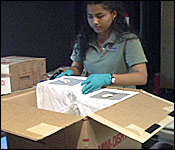
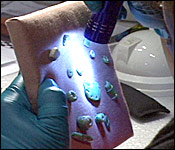
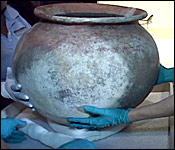
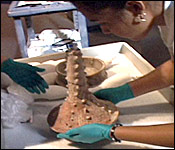
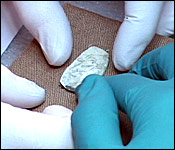
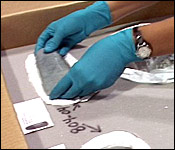
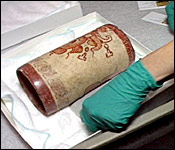 When we left you last night, the climate controlled 18 wheeler carrying 250 of Belize's most prized Mayan antiquities was on the move from Boston, Massachusetts to San Diego, California. The truck has two drivers and is on a non-stop three thousand mile haul. When it gets to California on Friday, NICH staff will be waiting to open the special seals with bolt cutters to make sure all is in order. That first truck will be followed by eight more which carry the rest of the show. When we travelled to Boston on Saturday of last week we found out how they pack thousands of square feet of exhibits into eight foot wide trailers:..
When we left you last night, the climate controlled 18 wheeler carrying 250 of Belize's most prized Mayan antiquities was on the move from Boston, Massachusetts to San Diego, California. The truck has two drivers and is on a non-stop three thousand mile haul. When it gets to California on Friday, NICH staff will be waiting to open the special seals with bolt cutters to make sure all is in order. That first truck will be followed by eight more which carry the rest of the show. When we travelled to Boston on Saturday of last week we found out how they pack thousands of square feet of exhibits into eight foot wide trailers:..
Jules Vasquez reporting
It's spring in Boston - and bright skies and blossoms colour the city, but inside the Boston Science Museum, the crew is packing up after a tough winter.
It's the end of a 7 month stand at the Museum - and now a team of 14 have the job of packing up a show that was a world unto itself - into parts that are no more than eight feet wide for cross-country transit.
It's a job of great scale and small detail - compressing 12 thousand square feet of exhibit space into a few truckloads of stuff:
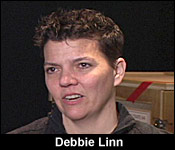 Debbie Linn - Travelling Exhibits Conservator
Debbie Linn - Travelling Exhibits Conservator
"There are so many different types of objects, different sizes, different weights. we have some really tiny beautiful delicate things from Belize that are just absolutely extraordinary that take a very gentle hand and care throughout all of this traveling and putting on manic of it. And then we have some really large things, some very large heavy things from Belize and some other landing institutions as well that really are the opposite into the spectrum. Everything is big about them, they're crates of them, and their mouths are big. They require some heavy lifters to move them. It's quite a challenge, its diversity of artefacts."
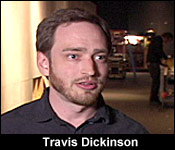 Travis Dickinson, Tour Manager
Travis Dickinson, Tour Manager
"It's very interesting you come into an exhibit hall on carts and it's very chaotic. I mean if you look back here, it looks like a lot of chaos but then as we start going we're able to get object sunder the floor. We're able to get components out and slowly, that stuff goes away and it gets cleaner and it is kind of magical like you said. It shows up and it gets built around what seems to be chaos and it's yeah, it's nice."
And while they do the heavy lifting in the exhibit hall, inside the backroom, it is all about the fine, even superfine details:
Jules Vasquez
"I see you working like a surgeon, or like a doctor, like you're dealing with human beings, like living beings."
Yusleidi Chan, Collections Manager - NICH
 "Yes they are! These are us, they represent us, our cultural heritage, so of course we should treat them as babies, cause without them, that's not us, that's not our identity as Belizeans."
"Yes they are! These are us, they represent us, our cultural heritage, so of course we should treat them as babies, cause without them, that's not us, that's not our identity as Belizeans."
That's right, she called objects, "babies". May sound odd, but it's a common thread we heard throughout our time in Boston:
Rebecca Newberry, Conservator
"Some objects have more personality than others, that's for sure."
Yusleidi Chan, Collections Manager
"Yes, all of them have different personalities in the beginning I didn't understand it, I didn't get it, but after working along with this project here I've seen it. Sometimes I'll be talking to the object, I'll be like, 'why did you shed, why you're giving me trouble? Why? Don't! Just be a good little object just reach safely to next venue.' And sometimes they do listen so."
Rebecca Newberry, Conservator
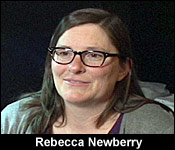 "The personality of the object is really what comes though when you sort of think about where this thing came from and why it would have been made. I mean I feel like things have sadness in them, some things have happiness in them, you know, and you can kind of tell, sometimes you can like a vibe off of an object and sometimes you just like the object, you know it just looks nice to you or it needs your tender loving care, so you feel more tender towards that object cause you know that it needs extra support."
"The personality of the object is really what comes though when you sort of think about where this thing came from and why it would have been made. I mean I feel like things have sadness in them, some things have happiness in them, you know, and you can kind of tell, sometimes you can like a vibe off of an object and sometimes you just like the object, you know it just looks nice to you or it needs your tender loving care, so you feel more tender towards that object cause you know that it needs extra support."
Debbie Linn - Travelling Exhibits Conservator
"Artefacts like these from the Maya they, they have an energy with them, you know, and for me, I feel a balance between this respect for the artefacts. And, I don't know how to explain it, but it is it is just an energy you get a power, these have power to them. They have this history to them, they carry with them the spirit in which they were made and the reasons why they were made. It's important to, kind of honour that as we are treating them with gloves and we're treating them in this very, kind of sterile, kind of precious, object way. But yet there's also this intimacy and this warmth and this connection that you have with the artefacts as you work with them. For me, it enables me to care for them better."
And caring for them is what so much of the work is about:
Sherilyne Jones, Director, Museum of Belize & Houses of Culture
"And at the end of the day the objects are of paramount importance and that is why there is the care and precision that goes into every stop."
And at every stop, Jones says, they do their magic:
Sherilyne Jones, Director, Museum of Belize & Houses of Culture
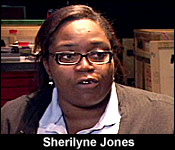 "The case can be made that, yeah, it is safer in Belize, leave them, why even take them out of the country? But it also gives us exposure, it exposes Belize, it puts us on the international map - that we do have precious objects. When people think of Maya exhibitions in the past they thought of México objects, they thought of Guatemala, this exhibition really puts Belize in the forefront."
"The case can be made that, yeah, it is safer in Belize, leave them, why even take them out of the country? But it also gives us exposure, it exposes Belize, it puts us on the international map - that we do have precious objects. When people think of Maya exhibitions in the past they thought of México objects, they thought of Guatemala, this exhibition really puts Belize in the forefront."
Rebecca Newberry, Conservator
"Obviously part of me thinks that the safest thing to do with a museum artefact is to put it in a nice climate controlled dark place and leave it right? 'Cause it will stay in good shape. But what's the point of that? We save these pieces so that we can use them for educational purposes and research and furthering our understanding of our world and history, so there's no point in hiding them away."
Sherilyne Jones, Director, Museum of Belize & Houses of Culture
"So, I think that the risk that is involved is minimal when I think of the benefits that the country can get, or is getting from the exposure."
That exposure will continue in San Diego, starting on June 12, 2015 when it officially opens.



